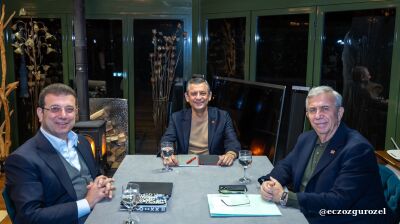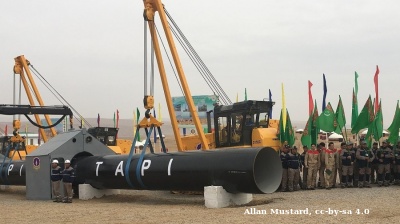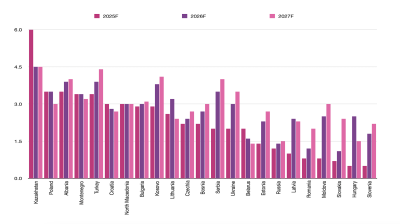A thousand protesters demonstrated outside the Chancellor’s office after Germany announced it was not sending Leopard tanks to Ukraine at the Ramstein meeting.
Germany’s refusal to send its powerful Leopard main battle tanks to Ukraine will prolong the war in Ukraine and makes a Berlin Wall-type scenario to end the conflict more likely.
Nato allies gathered at the Ramstein airbase on January 22 to co-ordinate military aid for Ukraine in its year-long conflict with Russia. Several billion dollars of military aid were announced; however, the key issue of providing heavy weaponry that could win the war for Ukraine was put off yet again.
The German-made Leopard 2 is one of the most well-reputed battle tanks in the world, perhaps second only to the US-made M1 Abrams tank, according to military arms experts. CNN reported from Ramstein that German officials said they wouldn't send their Leopard tanks to Ukraine or allow any other country with the German-made tanks in their inventory to do so, unless the US also agreed to send its M1 Abrams tanks as well.
In an effort to put pressure on Germany to give its permission, Polish Defence Minister Oleksii Reznikov said that Warsaw would begin training Ukrainian forces on the Leopard 2 in case Berlin changes its mind.
"We will start with this and then we will move further," Reznikov told the Voice of America.
German Defence Minister Boris Pistorius said that he had ordered his ministry to assess how many tanks could be made available and would announce Berlin’s “final decisions” after the assessment had been made.
Without the game-changing armament, the war in Ukraine is likely to grind on before it eventually is resolved as a frozen conflict with a Berlin Wall-style partition of the Donbas from the rest of the country that ended the “Berlin Crisis” at the start of the 1960s and which also brought the USSR and the US to the brink of a nuclear confrontation, say some analysts.
Germany on the defensive
Why is Germany so reluctant to provide weapons that could change the tide of the war that has ground down to a stalemate around the Donbas city of Bakhmut?
“It seems to me that the key to Germany’s reluctance to deliver tanks is what [German Chancellor Olaf] Scholz always says: that Ukraine should not lose and Russia should not win,” Minna Alander, a research fellow with the Finnish Institute of International Affairs, said in a thread on Twitter. “Instead, Ukraine should get enough support to prevail until both sides are ready for negotiations.”
Scholz doesn’t say that Ukraine should win because he’s not certain whether a Ukrainian military victory should be the aim. The reasoning is that if Russia lost, the consequences would be too unpredictable and dangerous. A defeat could lead to a palace coup and there is a widespread expectation that any successor would be more of a hawk than Russian President Vladimir Putin is.
The result is that Germany, which is the second biggest single contributor of military aid to Ukraine after the US, has exclusively sent defensive weapons to Ukraine. Tanks are an offensive weapon, and the Leopards are powerful enough to be able to turn the tide of the war.
“[Germany] has delivered everything that can be thought of as defensive and enables Ukraine to defend against Russian attacks, but not to attack back (at least not very effectively),” Alander continues. “So when Scholz says that Germany will support Ukraine as long as necessary, he means until both sides agree to negotiate. Ukraine should be supported enough to achieve a strong enough position militarily so that Russia can’t dictate the conditions – 'kein Diktatfrieden',” Alander said.
Thanks to Germany’s history, having fought the Russians in WWII and suffered massive destruction as a result, the population is similarly divided over the question of sending tanks to Ukraine. A recent poll found that 46% of respondents were in favour of sending Leopards to Ukraine, with 43% against, reports Alander, with another poll for TV station RTL finding 54% are in favour of delivering Leopards to Ukraine, but 58% don’t want Ukraine to use them to take back Crimea. Germans think, like the Russians, that the Crimea has always belonged to Russia, partly thanks to a Russian 2016 influence campaign in Germany that successfully instilled the Kremlin’s “Crimea was always Russian” propaganda line on the German public, another study found.
“I believe that this is the crux of the issue in Germany – the fear of the consequences if Ukraine pushes too hard and too far, especially to Crimea,” Alander concludes.
US Abrams vs German Leopards
Scholz has said that Germany should not be expected to carry the load alone and that if the US sends some of its Abrams main battle tanks, Germany will follow suit.
Linking Leopards to a commitment by the Pentagon to send Abrams to Europe has been widely seen as a delaying tactic by Scholz, but the US motives are unclear; the US is also afraid of escalation.
However, as Daniel Davis, a former tank commander, points out in an article for 1945, there are very real practical problems with sending Abrams and unless they arrive in large numbers, fully supported and with significant training for their operators, such Western tanks won’t make that much difference.
Pressure continues to build to send tanks. French President Emmanuel Macron said on January 22 that he does not rule out sending the French Leclerc main battle tanks and Berlin invited Warsaw to formally apply for permission to transfer its Leopards to Kyiv the same day. Calls in the US to send the Abrams tanks have also been growing in Congress. However, if tanks are sent in the near term the number are likely to be small to begin with, similar to the single company of Challenger 2 tanks sent by the UK to Ukraine as Western governments try and find a balance between helping Ukraine, but not with numbers enough to provoke the Kremlin into yet another extreme response.
The main problem is that the Abrams is significantly more sophisticated than the Leopard and would require much more training and maintenance that will be hard to organise. Leopards are widely used across all of Europe and so spare parts and maintenance facilities are close by. Everything needed to support the Abrams would have to be flown across the Atlantic to support a force in Ukraine. That could be done, but on a mere logistical support basis the Leopards are by far the most obvious choice of tank.
A second issue driving Scholz’s reluctance is that the German military is totally dysfunctional. A series of poor decisions made by successive defence ministers have left the German war machine paralysed and short of tanks. In 1989 Europe had prepared for a potential fight with the Soviet Union and Germany had 4,700 tanks. After the end of the Cold War the focus changed to fighting special operations against terrorist groups like Al Qaeda and those large conventional forces have been radically scaled down. Today Germany only has 300 Leopards left, and many of those don’t work.
“The Bundeswehr possesses more than 300 Leopard 2 battle tanks. Around two-thirds of them are "available," but of that number, just 60% – around 130 – are operational,” Der Spiegel wrote in a deep dive into the poor state of the German army last week.
Underinvestment has played a large role here too. Days after Russia’s invasion of Ukraine Scholz’s Zeitenwende speech to the German Parliament in February promised a massive increase in defence spending up to the 2% of GDP "target” recommended by Nato. Germany has been underspending for years, leaning heavily on the US for its security. However, in December Berlin announced that it would miss the 2% target this year and the new Defence Minister Boris Pistorius, who replaced Christine Lambrecht last week, said recently that the 2% target may not be met until 2025.
Pistorius’s chief spokesperson Steffen Hebestreit told journalists at Remstein that the 2% target would be missed not only this year, but also likely next year: “It’s still open whether that [goal] will be achieved” in 2023, Hebestreit said, adding that his “cautious expectation” was that Germany would still meet the target within this legislative period, which ends in 2025.
Like the US, Germany’s military has already been stretched from the support given to Ukraine and its military needs a major overhaul and a massive injection of cash just to restock its inventory of the weapons that have been sent to Ukraine.
The West remains very reluctant to spend the money needed to beat Russia. While the value of the arms already sent runs into the tens of billions of dollars, the West has yet to invest into expanding military production to replace munitions that have largely been drawn from existing stocks.
As bne IntelliNews reported in a recent piece “running out of ammunition”, Ukraine has been using the munitions faster than the West can manufacture new ones. A recent study by the Center for Strategic & International Studies (CSIS) suggests that there could be a crisis starting this summer when the West runs out of ammo to send Ukraine.
From the major Nato powers, only the UK was meeting the 2% threshold at the start of the war. French President Emmanuel Macron has just released detailed plans for a major boost to his country's armed forces, to meet modern threats including Russia's war in Ukraine on January 20. He said that the next seven-year budget would increase military spending to €413bn from 2024-30, up from €295bn now.
And other Nato members have similarly increased military spending in light of the Russian aggression, with new spending announced at the Ramstein meeting.
Western governments are reluctant to sign the multi-year contracts needed to persuade private arms manufacturers to invest into the new production lines and boost output to meet the needs of Ukraine, according to CSIS. Moreover, even if these contracts were signed today, it would take up to a year for production to increase, due to construction lead times and the problem of staffing the new facilities.
Nato membership back on the agenda
Kyiv is becoming increasingly frustrated with Western dithering on the question of supplying offensive weapons and the West is searching for ways to break the deadlock.
With Kyiv and Moscow so far apart on their starting positions for peace talks the prospects of the latter appear to be further away than ever. The stalemate has convinced some that it’s time to let Ukraine into Nato.
US elder statesman Henry Kissinger made himself very unpopular by arguing in the first months of the war that the West should put pressure on Ukraine to do a peace deal with Putin and be prepared to persuade Kyiv to give up some territory in the interests of preventing a wider war.
Speaking at the Davos conference in Switzerland this month, the grand master of Realpolitik had changed his mind. He said Russia's invasion shows there is no longer a point in keeping Ukraine out of Nato. The 99-year-old former secretary of state said that Nato membership for Ukraine would be an "appropriate outcome."
"The idea of a neutral Ukraine under these conditions is no longer meaningful," he said.
Sergey Radchenko, a professor with the Kissinger Centre in Washington, has also changed his tone and says he is coming around to the idea of letting Ukraine into Nato as well, because it doesn’t make any difference anymore.
“First, one old rationale for keeping Ukraine out – our fear of provoking Russia – manifestly does not apply. We are in a new security environment facing a radicalised Russia that shows no interest in co-building any sort of a joint security framework in Europe. In other words, the Russians cannot be profitably "engaged," though it does not mean that we should not be talking to them,” Radchenko said in a thread on Twitter.
“Second, Ukraine is already effectively a member of Nato: it relies on Western arms and Western intelligence, and the level of co-operation between Ukrainian and Western militaries is far beyond where we could have imagined it just months ago.”
“Third, anchoring Ukraine in Nato could help assure its long-term orientation towards the West, and will institutionalise trust, which is important for a country that is emerging as one of the major military players in the part of Europe where trust has always been in short supply.”
“Finally – and this reason is perhaps the most important one as far as I am concerned – Nato membership would offer credible deterrence against Russia's nuclear threat. At the moment we suffer from a deficit of credibility.”
“This potentially creates a very dangerous situation, as Russia may find it tempting to resort to nuclear weapons to stave off a defeat in Ukraine. Credible deterrence would require a nuclear umbrella, not vague pronouncements about possible conventional retaliation,” Radchenko concluded.
“Putin invaded Ukraine in part because (he claimed) Ukraine was on the way to join Nato (though it clearly wasn't). His reckless actions should make this a self-fulfilling prophecy.”
Berlin Wall
Letting Ukraine into Nato remains an extreme option that would likely only antagonise Putin further. Much more likely is that Kyiv is forced to the negotiating table but the conflict becomes frozen in mutual mistrust.
Back at the start of the war Radchenko suggested the stand-off over Ukraine could follow a similar path to the “Berlin Crisis” in 1958-61 that was only resolved by building the Berlin Wall.
In a similar stand-off between the Kennedy and Khrushchev administrations, the world was then also drifting towards a nuclear war as the Soviets wanted to take complete control of Berlin, which was deep in Soviet-controlled East Germany, whereas Kennedy refused to give the capital up.
In November 1958 Khrushchev announced the first in a series of ultimatums, demanding an end to the four-power occupation rights of the city and a new peace treaty – very similar to the eight-point list of demands issued by the Russian Foreign Ministry in December last year that demanded “ironclad legal guarantees” that Ukraine could never join Nato.
The Berlin crisis set the Soviet Union on a collision course with the Allies as Khrushchev set a six-month deadline for a deal, after which he implied he would take Berlin by force. Like Putin, Khrushchev nailed his own flag to the mast with his ultimatum and his own position as Politburo Chairman would be in danger if he backed down. Khrushchev also assumed that the West would not risk a nuclear war over Berlin and would back down. He was sure Britain and France would not risk a fight, but he was less sure about the US, Radchenko says.
Then, like now, the US refused to back down and the crisis escalated. In 1961 John F Kennedy launched the Bay of Pigs operation to try to take control of Cuba, making Khrushchev nervous that the US might do something stupid in Berlin.
In the end, caught between a rock and a hard place, Khrushchev ordered the Berlin Wall to be built as a compromise solution.
“It was an ugly solution, but it was one that lasted for 30 years and prevented war,” says Radchenko.
Features

BEYOND THE BOSPORUS: Espionage claims thrown at Imamoglu mean relief at dismissal of CHP court case is short-lived
Wife of Erdogan opponent mocks regime, saying it is also alleged that her husband “set Rome on fire”. Demands investigation.

Turkmenistan’s TAPI gas pipeline takes off
Turkmenistan's 1,800km TAPI gas pipeline breaks ground after 30 years with first 14km completed into Afghanistan, aiming to deliver 33bcm annually to Pakistan and India by 2027 despite geopolitical hurdles.

Looking back: Prabowo’s first year of populism, growth, and the pursuit of sovereignty
His administration, which began with a promise of pragmatic reform and continuity, has in recent months leaned heavily on populist and interventionist economic policies.

Emerging Europe’s growth holds up but risks loom, says wiiw
Fiscal fragility, weakening industrial demand from Germany, and the prolonged fallout from Russia’s war in Ukraine threaten to undermine growth momentum in parts of the region.

_Cropped.jpg)


